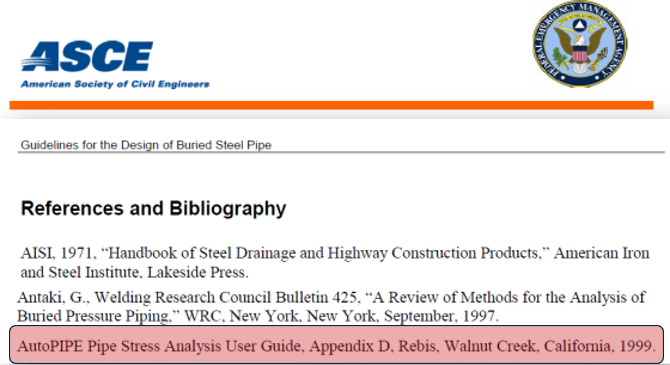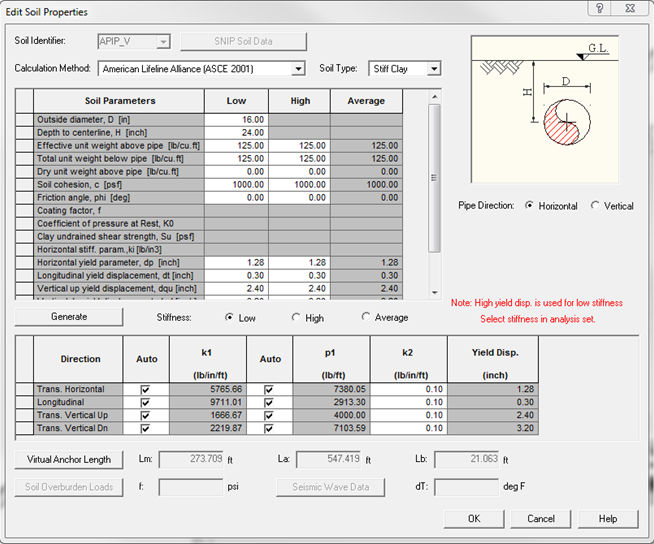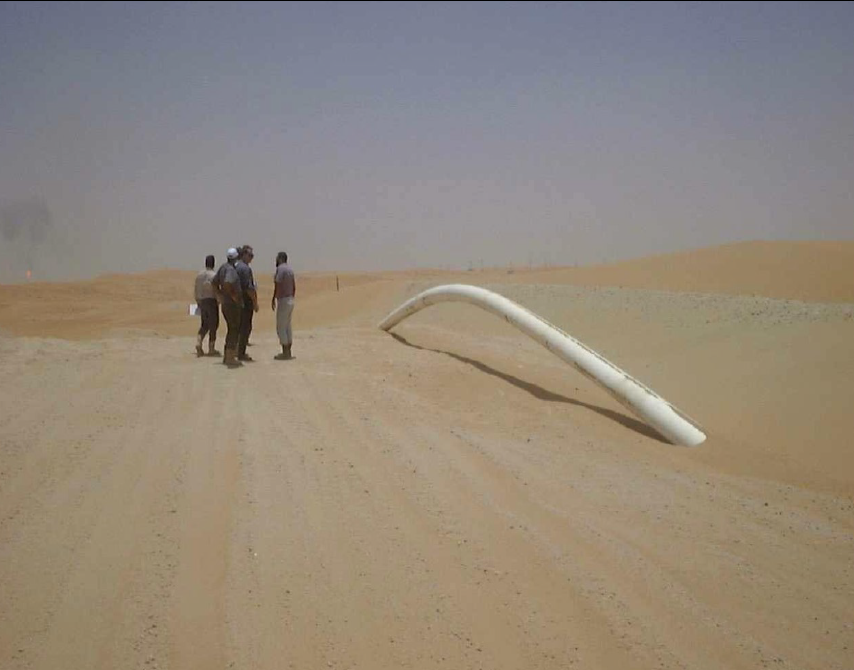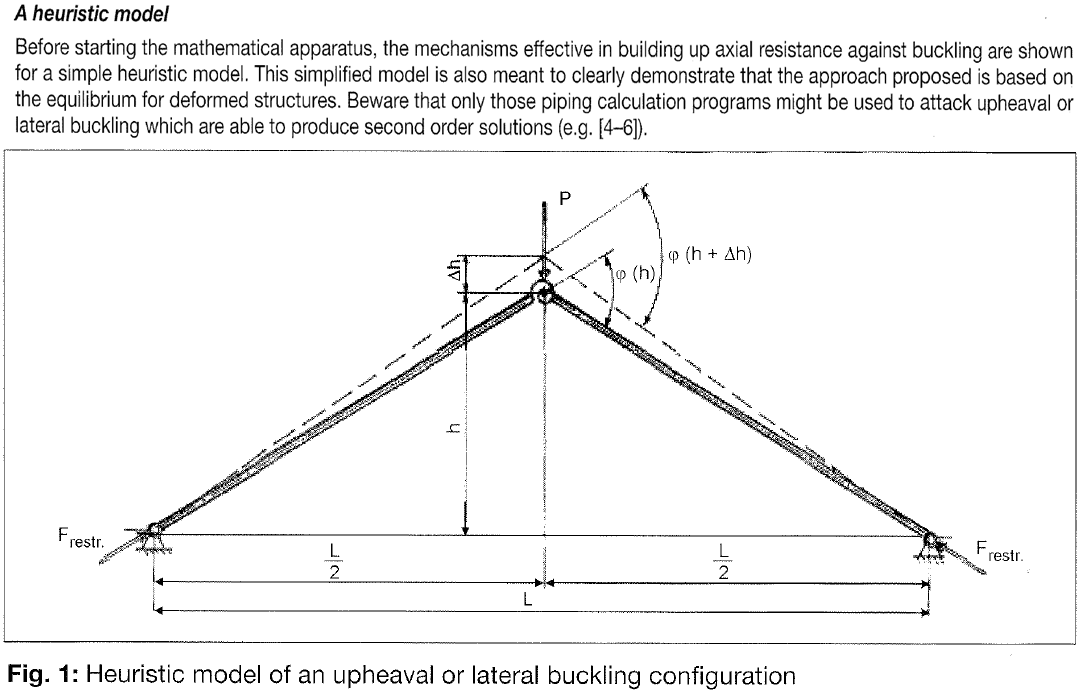

AutoPIPE is recognized by American Society of Civil Engineers with Automatic Soil Calculator to latest ASCE Rules.
AutoPIPE is the only software listed in the reference and Bibliography of the Guidelines for the Design of Buried Steel Pipe.
With AutoPIPE you don't need to build the pipeline geometry node by node. You can reuse your data and build the geometry in minutes instead of many days.

AutoPIPE has included the upheaval buckling calculation based on the approach of Dr K. Peters.
This feature enables users to perform upheaval buckling analysis on buried pipelines to determine if upheaval is likely to occur and suggest required soil stiffness (cover height).
Few iterations and more accurate soil depths compared to the manual approach. See+

AutoPIPE has the Dr. K. Peters methodology included in the program.
According to this method we must compensate the upward component of the axial force with the distributed load of the soil on the pipe, in all the buckling lengths L of the pipe.

Users can also do manually the verification recommended by the A.L.A.
With the Upheaval option activated, the program calculates the required soil depth.
A new column is added to the output report. When the depth is sufficient, the program displays a zero. When we do not meet the required depth, the recommended depth will be indicated in this column and it will be highlighted with asterisks.

AutoPIPE allows you to define the height of the water table and analyze its effect on overhead or buried pipes.
Additionally, the effect of soil liquefaction during an earthquake can be analyzed to calculate the load on anchoring piles in that area, or of counterweights to counteract the push effect of liquid soil.
The image above shows the pipe floating due to the liquefaction of the ground. The second image shows the effect of the counterweights holding the pipe in place.
